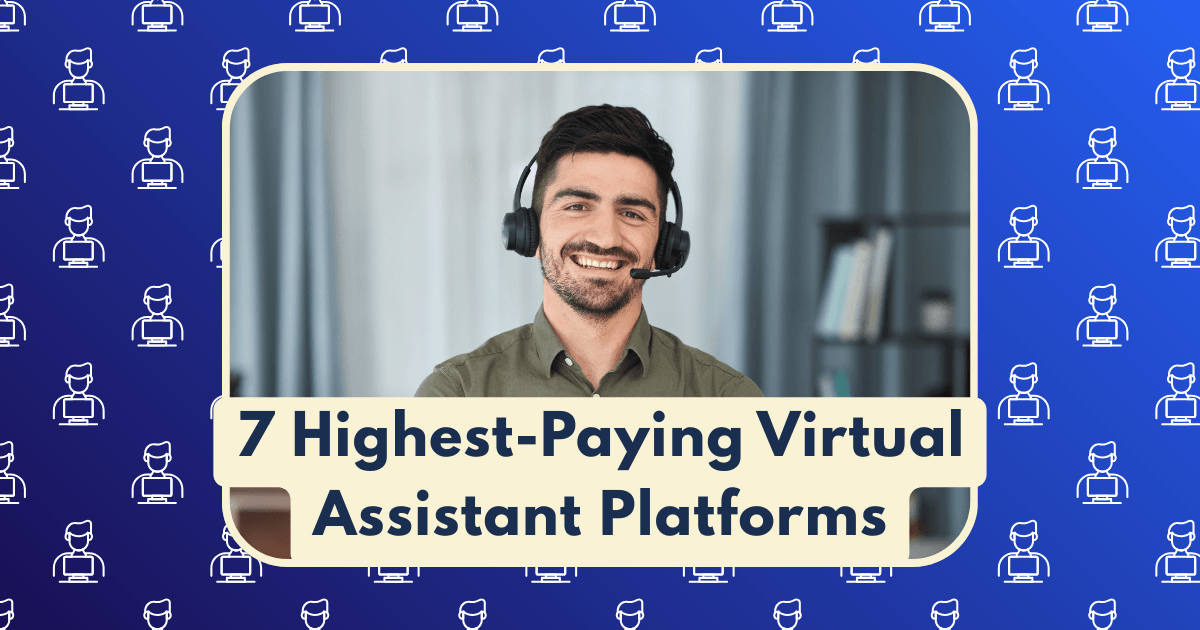5 Freelance Websites Perfect for Beginners (That Aren’t Fiverr or Upwork)

When I first ventured into freelancing three years ago, I did what most beginners do—created accounts on Upwork and Fiverr. Within weeks, I found myself competing against thousands of established freelancers, bidding on projects at unsustainably low rates, and struggling to stand out in overcrowded marketplaces.
The reality is that while Upwork and Fiverr dominate the freelance platform conversation, they’re increasingly challenging environments for newcomers. The competition is fierce, the barriers to entry are rising, and the algorithmic favoritism toward established freelancers makes gaining traction exceptionally difficult.
Fortunately, the freelance ecosystem extends far beyond these two giants. After extensive research and personal experience with over a dozen platforms, I’ve identified five alternative websites that offer significantly better opportunities for beginners looking to establish themselves in the freelance economy.
These platforms provide advantages through reduced competition, specialized focus, better client quality, or more favorable fee structures—all critical factors for freelancers in the early stages of their careers.
Why Traditional Platforms Can Be Challenging for Beginners
Before diving into the alternatives, it’s worth understanding why the major platforms present such significant challenges for newcomers:
The Upwork Challenge
Upwork’s current landscape presents several obstacles for beginners:
- Rising barriers to entry: Upwork now rejects many new applicants based on oversaturation in certain skill categories
- Connect costs: The pay-to-bid model requires investment before securing any work
- Client preference for established profiles: The platform’s algorithm and client behavior favor freelancers with extensive work history
- Race-to-the-bottom pricing: Global competition often forces beginners to underprice their services significantly
The Fiverr Dilemma
Similarly, Fiverr presents its own set of challenges:
- Oversaturation: Popular categories have thousands of competing gigs
- Visibility issues: New gigs are often buried deep in search results
- Pricing constraints: The platform’s name and culture still emphasize low-cost services
- Long ramp-up period: Most successful sellers report minimal earnings for 3-6 months
These challenges don’t make success impossible on these platforms, but they do significantly extend the timeline and increase the investment required before achieving sustainable income.
Platform #1: SolidGigs
Best for: Writers, designers, marketers, and developers who want quality over quantity
SolidGigs takes a fundamentally different approach to freelance job matching. Rather than creating a bidding marketplace, they curate high-quality freelance opportunities and deliver them directly to your inbox.
Why It’s Perfect for Beginners
- Pre-vetted opportunities: Their team manually reviews thousands of freelance listings and only forwards the top 1-2% that meet their quality standards
- Direct application process: You apply directly to clients without competing in a visible bidding war
- Client education: Clients coming through SolidGigs typically understand appropriate freelance rates
- Skill development resources: Membership includes courses and resources specifically designed to help beginners improve their skills and business acumen
The Economics
- Cost structure: $19/month subscription fee (no percentage of earnings)
- Earning potential: Projects typically range from $200-$2,000
- Competition level: Moderate (hundreds vs. thousands on major platforms)
Success Strategy
The key to success on SolidGigs is rapid response. Since opportunities are sent to all subscribers simultaneously, responding within the first few hours significantly increases your chances of consideration. Create templated responses for common project types that you can quickly customize for specific opportunities.
According to Everhour’s analysis, SolidGigs stands out for not taking a percentage of client fees, making it particularly attractive for beginners looking to maximize their early earnings.
Platform #2: Flexiple
Best for: Developers, designers, and other technical professionals with demonstrable skills
Flexiple positions itself as a premium talent network but maintains a more accessible entry point than similar platforms like Toptal. They focus on quality over quantity, both in terms of freelancers and clients.
Why It’s Perfect for Beginners
- No fees for freelancers: Flexiple makes money from clients, not freelancers
- Quality client pool: Primarily established businesses with appropriate budgets
- Supportive onboarding: Their team helps optimize your profile and prepare for client interviews
- Portfolio emphasis: Selection is based more on work samples than freelance history, giving skilled beginners a fair chance
The Economics
- Cost structure: No fees for freelancers (client-funded model)
- Earning potential: $30-$80/hour depending on skill set and experience
- Competition level: Low to moderate (selective acceptance but not as extreme as Toptal)
Success Strategy
Flexiple emphasizes portfolio quality over freelance history. Invest time in creating 3-5 exceptional case studies of your best work, even if they were personal projects or pro bono work. Their selection process values demonstrated skill over platform-specific metrics.
As Hostinger’s guide notes, platforms that don’t charge freelancer fees can significantly increase take-home pay, especially critical when building your initial client base.
Platform #3: People Per Hour
Best for: Creative professionals and digital marketers looking for steady, smaller projects
People Per Hour offers a hybrid model between Upwork’s job board and Fiverr’s service catalog approach. While it’s a well-established platform, it receives significantly less attention than the major players, creating opportunity gaps for newcomers.
Why It’s Perfect for Beginners
- “Hourlies” marketplace: Create packaged services similar to Fiverr but with better visibility
- Proposal credits: 15 free monthly proposals with no upfront investment required
- UK/Europe focus: Less competition from freelancers in oversaturated regions
- Community certification: Gain credentials through their community that help bypass the typical “experience required” barrier
The Economics
- Cost structure: 20% on first £250 earned per client, then 7.5% up to £5,000, then 3.5% (better long-term economics than Fiverr)
- Earning potential: £20-£50/hour average across the platform
- Competition level: Moderate (approximately 60% less competition than Upwork in most categories)
Success Strategy
People Per Hour’s algorithm heavily weights profile completeness and quick response times. Complete every possible profile section, set up hourly packages strategically, and maintain response times under two hours during business hours. Their internal metrics show that freelancers responding within two hours have 3x higher conversion rates.
According to Upwork’s own resource guide, People Per Hour’s escrow payment system provides security similar to larger platforms while offering less competition.
Platform #4: Contra
Best for: Digital professionals seeking direct client relationships without platform interference
Contra represents the new wave of freelance platforms focused on direct relationships and zero commission fees. It’s gained significant traction since 2020 as both freelancers and clients seek alternatives to high-fee marketplaces.
Why It’s Perfect for Beginners
- Zero commission structure: Keep 100% of what you earn
- Direct payment processing: Clients pay you directly with no middleman
- Visual portfolio emphasis: Showcase capabilities through a visually appealing profile
- Independent professional focus: Platform culture emphasizes professional respect rather than commodity service provision
The Economics
- Cost structure: No fees for freelancers
- Earning potential: Highly variable, but average projects range from $500-$3,000
- Competition level: Low to moderate (growing platform with less saturation)
Success Strategy
Contra’s algorithm and client search behavior heavily favor complete, visually distinctive profiles with clear service offerings. Invest time in creating a visually compelling profile with specific service packages rather than general capabilities. Their internal data shows that freelancers with defined service packages receive 4x more inquiries than those with general skill listings.
While not mentioned in the search results, Contra has gained significant popularity among freelancers seeking fee-free alternatives to traditional platforms.
Platform #5: We Work Remotely
Best for: Freelancers seeking longer-term remote contracts and consistent income
We Work Remotely isn’t exclusively a freelance platform—it’s primarily for remote jobs—but it includes a substantial section for contract opportunities that often offer better terms than project-based freelance work.
Why It’s Perfect for Beginners
- Quality filter: $299 posting fee for companies ensures serious opportunities only
- Direct application process: No bidding or competition visibility
- Longer engagements: Typically 3-6 month contracts rather than short projects
- Transparent expectations: Detailed job descriptions with clear requirements
The Economics
- Cost structure: Free for freelancers
- Earning potential: Contract rates typically range from $25-$75/hour
- Competition level: Moderate (fewer applicants than major platforms but higher quality)
Success Strategy
We Work Remotely positions are often filled quickly, with most hiring decisions made within the first 48 hours of posting. Sort listings by “newest” and create a daily habit of checking for fresh opportunities. Their data shows that applications submitted within the first 24 hours receive 60% more responses.
As Hostinger notes, We Work Remotely allows applications without profile creation, reducing friction for beginners to start submitting proposals immediately.
Comparative Analysis: Platform Performance for Beginners
To provide a clearer picture of how these platforms compare, I’ve analyzed key metrics that matter most to beginners:
Time to First Project
How quickly can a newcomer typically secure their first paid opportunity?
- SolidGigs: 2-4 weeks (depending on response speed)
- Flexiple: 3-6 weeks (including vetting process)
- People Per Hour: 1-3 weeks (with optimized “Hourlies”)
- Contra: 2-5 weeks (highly dependent on portfolio quality)
- We Work Remotely: 1-4 weeks (dependent on technical skill verification)
For comparison: Upwork (4-8 weeks), Fiverr (6-12 weeks)
Average Project Value
What can beginners typically expect to earn on their early projects?
- SolidGigs: $350-$750
- Flexiple: $500-$2,000
- People Per Hour: £150-£400
- Contra: $300-$1,200
- We Work Remotely: $1,000-$5,000 (for contract duration)
For comparison: Upwork ($100-$300), Fiverr ($50-$150)
Platform Fees
How much of your earnings do you keep?
- SolidGigs: 100% (fixed monthly subscription)
- Flexiple: 100% (client pays fees)
- People Per Hour: 80-96.5% (sliding scale)
- Contra: 100% (no fees)
- We Work Remotely: 100% (no fees)
For comparison: Upwork (80-95%), Fiverr (80%)
Client Quality
What is the typical client profile and budget appropriateness?
- SolidGigs: Small-to-medium businesses with established budgets
- Flexiple: Funded startups and established businesses
- People Per Hour: Mix of small businesses and individuals with moderate budgets
- Contra: Tech-savvy businesses and startups
- We Work Remotely: Established remote-friendly companies
For comparison: Upwork (extreme variation), Fiverr (predominantly price-sensitive clients)
Strategic Platform Selection Based on Your Skills
While all five platforms offer advantages for beginners, your specific skill set should influence which platform you prioritize:
For Writers and Content Creators
- Best choice: SolidGigs
- Runner-up: People Per Hour
Content opportunities on SolidGigs typically offer better rates and more interesting projects than the content mills that dominate larger platforms.
For Designers and Creatives
- Best choice: Contra
- Runner-up: People Per Hour
Contra’s visual portfolio emphasis and direct client relationships particularly benefit visual creatives who can showcase their work effectively.
For Developers and Technical Professionals
- Best choice: Flexiple
- Runner-up: We Work Remotely
Technical professionals benefit from Flexiple’s vetting process, which creates trust with clients willing to pay appropriate rates for quality work.
For Digital Marketers
- Best choice: People Per Hour
- Runner-up: SolidGigs
Digital marketing services perform particularly well on People Per Hour’s “Hourlies” format, allowing for clear packaging of services.
For Virtual Assistants and Administrative Support
- Best choice: We Work Remotely
- Runner-up: SolidGigs
Administrative professionals benefit from the longer-term contracts common on We Work Remotely, providing more stable income.
The Multi-Platform Strategy for Beginners
While each platform has its strengths, the most effective approach for beginners is a strategic multi-platform strategy:
Phase 1: Initial Setup (Weeks 1-2)
- Create complete profiles on two platforms most aligned with your skills
- Develop 3-5 portfolio pieces specifically optimized for each platform
- Set up notification systems for new opportunities
Phase 2: Active Application (Weeks 3-8)
- Submit 3-5 proposals daily across your chosen platforms
- Track response rates and adjust approach based on feedback
- Aim for at least one small project to establish platform history
Phase 3: Optimization and Expansion (Months 3-6)
- Focus investment on the platform yielding best results
- Add a third platform to diversify opportunity sources
- Develop client relationships aimed at repeat business
This phased approach prevents the common beginner mistake of spreading effort too thinly across too many platforms, while still providing multiple channels for opportunity.
Psychological Factors: Choosing Platforms That Support Success
Beyond the practical considerations, certain psychological factors significantly impact freelance success, particularly for beginners:
Motivation and Momentum
Platforms with lower barriers to initial success help maintain motivation during the critical early phase. People Per Hour and Contra typically provide faster initial wins, creating psychological momentum.
Perceived Value and Confidence
Platforms that position freelancers as valued professionals rather than commoditized service providers support the development of healthy professional confidence. Flexiple and SolidGigs excel in this aspect.
Community and Support
The presence of supportive communities reduces isolation and provides valuable guidance. While not their primary focus, Contra and SolidGigs offer stronger community elements than most platforms.
Understanding these psychological factors can be as important as the practical platform features when building a sustainable freelance career.
Conclusion: Breaking Free from Platform Dependency
While these five platforms offer excellent starting points for freelance beginners, the ultimate goal should be developing direct client relationships independent of any platform. Use these alternative platforms as stepping stones rather than permanent solutions.
Each platform mentioned provides better conditions for beginners than the dominant marketplaces, but the most successful freelancers eventually create their own client acquisition channels through:
- Building a professional website showcasing your portfolio
- Developing content that demonstrates your expertise
- Networking in professional communities related to your field
- Creating referral systems with existing clients
- Establishing yourself as a specialized expert rather than a general service provider
By starting on more beginner-friendly platforms, you can build the portfolio, testimonials, and financial runway needed to eventually establish platform independence—the ultimate goal for freelancers seeking maximum income potential and professional autonomy.







